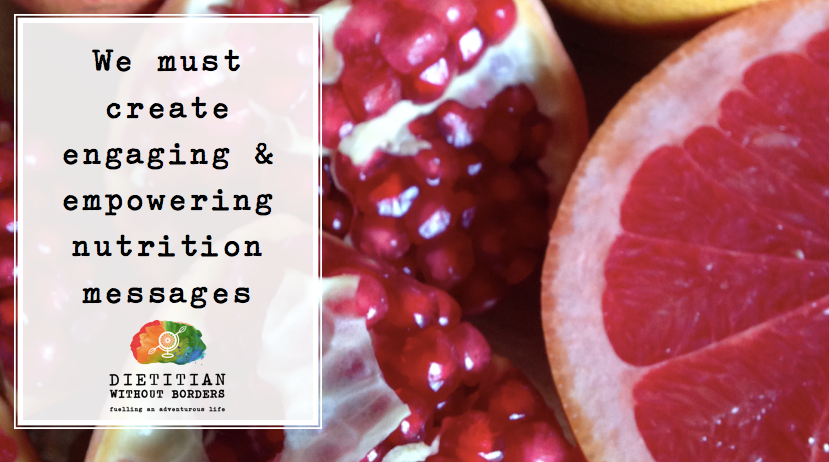The Eatwell Guide debate: Time for change.
When the Eatwell Guide (previously the Eatwell plate) was relaunched, to say I was unimpressed is probably an understatement. Here I discuss a few of the reasons why I feel it's time to leave the Eatwell plate behind and focus our energies and attentions elsewhere to inspire change.
Earlier this week I presented at Diabetes UK Professional Conference debating the Against side of the Eatwell guide. This post summarises the main points I addressed in my talk.
The Eatwell Guide is still a plate
The knife and fork may be missing, but lets call a spade a spade. It's still a plate!
I've got many problems with it being a plate. The first is that it makes it difficult to quantify meal-by-meal day-by-day. In my experience many people think that every meal needs to be distributed in the proportions according to the plate. However, that is not always the case - particularly with someone who has diabetes as that would be way too much carbohydrate.
Public Health England state that you can tell by looking at the guide how many serves of fruit and vegetables you need to eat a day. Now I'm sorry. I've been working as a dietitian for almost ten years and know a bit about nutrition and I honestly don't see that message coming through. Anyone, please feel free to enlighten me. Because visually that isn't what I see!
Nutrition for life
We live in a very diverse world, with people of all ages, backgrounds and cultures. There is no one-size fits all when it comes to nutrition. Nutrition requirements vary as we get older, it varies according to our health status whether we are healthy or not, and also there are some major differences in nutrition needs between men and women. Why stick to the blanket approach when we clearly need different advice for different groups of people?
Calories
On the whole I am not a huge fan of calorie counting.
It certainly has its place and is useful to raise awareness of how much we can be over eating certain foods. However, nutrition requirements are so individual and variable that one-size-fits-all approach is terribly outdated.
I love how the Swedish food guidelines instead recommend eating according to the amount your body needs to maintain it's weight. This is always going to vary depending on whether you are active and any underlying health conditions.
Macros and micronutrients
Can we please stop with the fat shaming already?
Particularly when it comes to dairy products. There is plenty of evidence to show that the fat in milk and yoghurt does not negatively impact weight. Cutting the amount of dairy products recommended is also concerning. Many women and girls in particular don't consume enough dairy products (or fortified substitutes) to promote bone health as it is.
It's so important to look at the bigger picture and what other impact these messages are sending. Subtle messages to eat less dairy products, in particular low fat products can result in more people avoiding these perfectly healthy foods - having long term health impacts.
Time for Change
In today's smart phone era we have the attention span of a goldfish. That means we have microseconds to get positive messages across to change behaviour. Times are changing and we need to be able to provide nutrition advice that reflects what's going on in every day life. In my opinion it's essential that this is visual, engaging, practical and persuasive.
Personally I believe that we should be going down the approach of Brazil and Sweden with their food based nutrition guidelines. Instead of looking at specific nutrients (hello fat shaming of the 80s and 90s), we need to promote themes and trends which improve health.
Brazil hit the nail on the head with their Golden Rule to always prefer natural of minimally processed foods and dishes over ultra processed foods
I think it's time for change. To try something new, something radical when it comes to health promotion and nutrition advice. Because what we have at the moment just isn't working.
Gemma
Eat well with confidence
Would you like to work together and improve your performance? Get in touch for nutrition coaching. No more confusion about what to eat when to boost your performance, I'm here to help!










